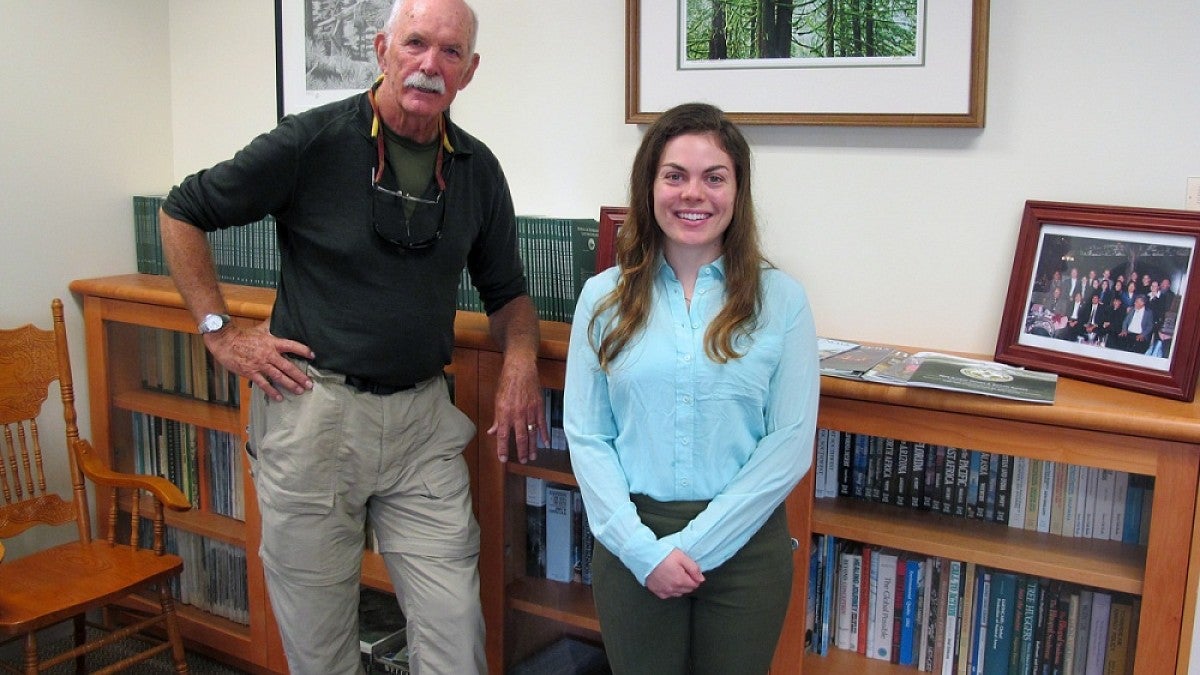A UO-led analysis of 16 laws that apply to managing the environmental health of Oregon's coast in ways that protect entire ecosystems has found a lack of communication among the agencies charged with implementing the regulations.
In addition to the independent yet often identical requirements of many agencies, decision-making involving new or expanding projects is hobbled by differing politics, opinions and perspectives among governing jurisdictions, says Alexandra Hoffman, who graduated in May from the UO School of Law.
Hoffman was the lead author of the study, which is online ahead of print in International Journal of Environmental Sustainability.
In her analysis, Hoffman looked at eight federal and eight state laws to see how they incorporate ecosystem-based management, a widely used approach defined with guiding principles set forth by Andrew A. Rosenberg of the University of New Hampshire and Union of Concerned Scientists.
"The flaw in the current system is that almost every statute that I've analyzed was the cross section between agencies," Hoffman said. "You have to go to representatives of each agency for a permit. There is no meeting of the minds, no communication between agencies."
What is needed, she said, is a process in which all agencies with a legal stake in a proposed project provide representatives to collectively review a single application, assure that it meets all state and federal guidelines and decide whether a project is approved or rejected. Hoffman suggests a regional council whose membership would be drawn from all governmental bodies involved a proposed project.
At stake is the sustainability of ecosystems along the Oregon coast, from where each habitat begins in the Coast Range down to the ocean and including rivers, valleys, forests, grasslands, wildlife, people and ways of living. Full implementation of ecosystem-based management would help assure full protection for habitats, various industries and public health, Hoffman said.
The paper is the result of a two-year effort led by Richard Hildreth, director of the UO's Ocean and Coastal Law Program and member of the Environmental and Natural Resources Law Center. Oregon Sea Grant supported the project, which concluded June 30. An underlying theme was the effect of human activities on ocean acidification, said Hildreth, who is the school's Frank Nash Professor of Law.
Along the way, Hoffman and fellow law students Brent Sutten and Libby Pettit explored the handling of permit applications of the Jordan Cove liquefied natural gas export terminal at Coos Bay and the Coyote Island coal export facility along the Columbia River at Boardman. That work resulted in three as-yet-unpublished papers that fed Hoffman's analysis. Sutten also considered the process for ocean desalinization.
"Ocean acidification is a consequence of using fossil fuels," said Hildreth, who was Hoffman's mentor and co-author on the paper. "In no way can our project solve that issue, but I felt it was perfectly appropriate to say, yes, we're being analytical about managing the ecosystem appropriately for these specific fossil-fuel projects."
As an example of how the approaches by separate agencies affect a proposed project, Hoffman noted that permits were needed from three different agencies to pursue fill removal at Coyote Island.
"One agency said yes, one said no and the other declined to make a decision until the other two reached agreement," she said. "That is the kind of problem I'd like to fix. How can we get these agencies to work together? We need to find a way to avoid three separate processes and three separate agendas. In our paper, we don't go into how to do that, but we provide a beginning."
Successful collaboration occurred in the approval of the Redfish Rocks Marine Reserve and Protected Area in 2009, Hoffman and Hildreth noted in their study. Under state legislation, representatives of both the city and port of Port Orford, commercial anglers, business owners, conservationists, recreationists, the local watershed council and scientific community combined resources and came together to finalize the project.
"There is actually a lot of good in these environmental statutes," Hoffman said. "What each of them is missing, though, is a comprehensive, cross-sectional meeting of the minds. What I hope this paper does is communicate to the public and to governments that more communication needs to happen among agencies, industries, commercial and residential interests."
The Oregon Legislature also helped fund the project.
—By Jim Barlow, University Communications


